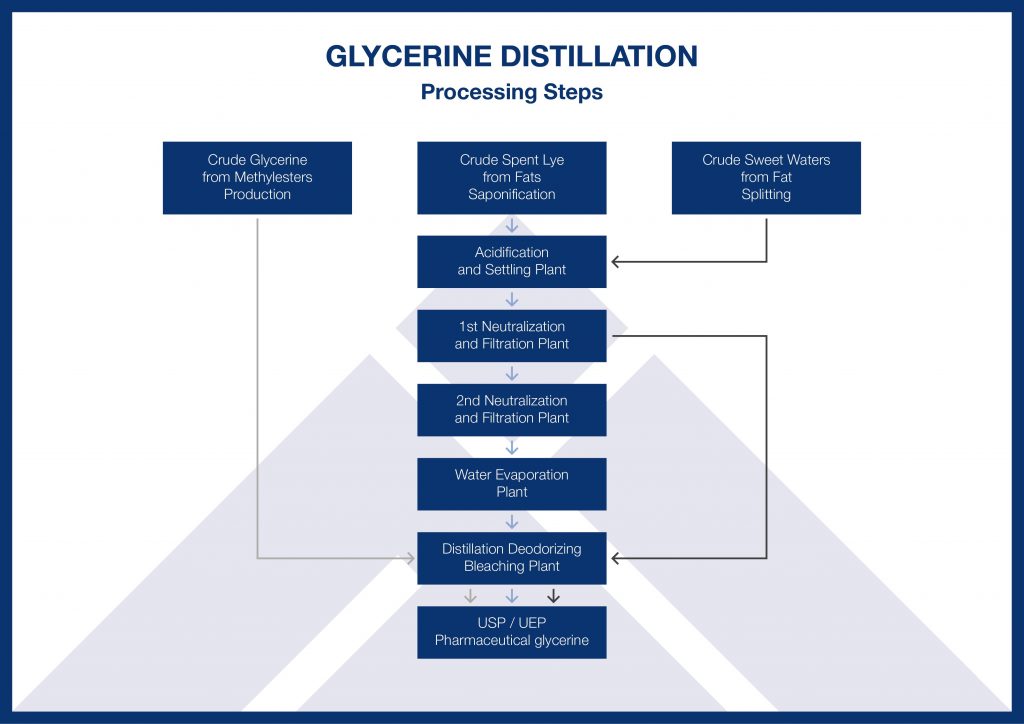Distilled glycerol contains volatile substances, a special odor, which directly affects the quality of glycerol. This odor can be removed by vacuum extraction. That is to say, under the condition of decompression, heating and introducing a small amount of steam to make volatile substances evaporate together with water vapor. This process is called deodorization. In deodorization operation, it is better to use superheated steam and carry out in a higher vacuum. The deodorization effect can be improved by prolonging the deodorization time properly.

The deodorization operation is usually carried out in a pressure-resistant deodorizer with material controlled at 2/3 of the volume of the reactor, temperature controlled at 115-125 C: pressure at 0.096 MPa (730 mmHg), direct steam pressure at 0.08MPa and time at 2 h.
Distilled glycerol often contains a small amount of colored substances, usually light yellow, so it must be decolorized. Activated carbon is the most commonly used adsorbent for decolorization. The quality of activated carbon has a great influence on the decolorization of glycerol. First of all, it must have a strong decolorization effect on glycerol. Secondly, the impurities of activated carbon such as chloride, ash, acid and alkaline, etc., have no adverse effect on the quality of glycerol.
The amount of activated carbon is determined by the color of distilled glycerol. The general dosage is 0.1%~0.3% of glycerol, which should not be excessive. When decolorizing with activated carbon, glycerol is heated to 80~90℃ and activated carbon is added. After fully stirring for a certain period of time, sampling and filtering, comparing the filtrate with glycerol product standard, adding a little activated carbon when necessary, and then filtering after meeting the product requirements. Decolorization operation is generally controlled at: temperature 80~90℃; decolorization time 1.5 h; pressure filtration temperature 80~90℃; filtration pressure less than 0.4 MPa.
Activated carbon particles are often found in the initial filtrate, which should be returned to the decolorization tank. The filtrate can be collected and stored only after the activated carbon has formed a certain thickness of filter cake. The filtered activated carbon residue contains a large amount of glycerol, which should be recovered. The operation method is that the residual glycerol in the activated carbon is pressed into the decolorization tank with compressed air, then the activated carbon is washed with hot water, and the washing liquid is mixed with the activated carbon cylinder. The discharged activated carbon filter cake is put into the activated carbon mixing cylinder, diluted and mixed, and then transported to the ferric chloride treatment tank for treatment. It can also be washed with heated water, and the washing liquid can be evaporated and distilled to recover glycerin. Waste activated carbon can also be regenerated, but it is not economical to regenerate activated carbon in general use units, most of which are mixed with coal and burned.

